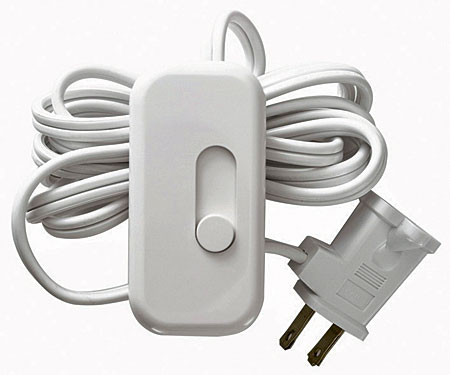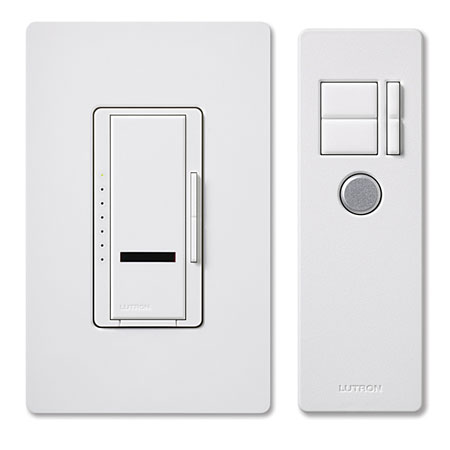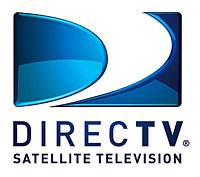Money for Nothing and Your Tweaks for Free Page 2
If the gear in your system offers the capability, dim the display illumination on your AVR, DVD player, and other components—especially if the equipment is near your TV. It’s surprising how distracting those display windows that show the volume level and source can be. Shane admits that he’s used small pieces of electrical tape to cover the power LEDs of components that didn’t have dimming capability. (That wins the award for being cheap and cheesy.) I’ve stuck reusable static-cling window-tinting material from the hardware store over large, non-dimming displays to reduce the brightness without totally concealing it. If the display is still too bright, you can use a double layer.
Cost: Free to $10


I wouldn’t use window-tinting film over the lights in your theater room, but electronic light dimmers are also a relatively low-cost system upgrade. You can buy a manual table/floor lamp dimmer that’s appropriate for incandescent lighting for a little more than $10. You can use in-wall dimmers, from companies such as Lutron and Leviton for your ceiling lights or sconces. Some dimmers have built-in IR receivers, so you can often control them by a universal remote control. This means you can have a basic lighting-control system for as little as $30 per light switch. Be aware that specialized dimmers and/or lamps are required if your theater uses fluorescent or LED lighting.
Cost: $10 and up
 5. Subscribe or Die a Standard Def
5. Subscribe or Die a Standard Def
A study from research firm In-Stat estimates that as of December 2008, more than 40 percent of HDTV-owning households aren’t watching high-definition programming. (Eighteen percent of them think they are, but that’s another issue.) Over-the-air programming is easy if your HDTV has a built-in digital TV tuner, you have an appropriate antenna, and you’ve taken the time to scan the digital channels available in your area. If you’re a cable or satellite subscriber and you haven’t signed up for an HD package, what the hell is wrong with you? Depending on your current subscription package, you should be able to add HD channels for as little as $10 per month. Talk with your favorite cable/telephone/satellite company customer service representative. While you’re at it, review your entire package bundle, especially if it includes phone, Internet, and television service. You might be able to eliminate unneeded services in your package that will help pay for the HD upgrade. But don’t stop there. Check out what the competition has to offer as well. Even if you don’t switch providers, you might be able to use the other company’s offer to negotiate a lower rate from your current one.
Cost: $10 and up (or possibly free if you’re a good negotiator)
6. Blu-ray Me


Adding a Blu-ray Disc player to your system may not be the first thing that comes to mind when you think of cheap tweaks, but you can get an entry-level BD player for $200. When you combine that with a Netflix subscription, you’ll have a whole lot of high-definition entertainment options. In our opinion, you’ll get much more for your money if you purchase a Blu-ray player that has built-in Internet streaming capabilities, even though the quality of streaming video is highly variable and highly dependent on the speed of your Internet connection. For example, LG’s new BD-370 and BD-390 Blu-ray players can provide instant streaming access to 300 movies in HD from Netflix (and more than 12,000 in SD), as well as selections from Cinema-Now and YouTube. Samsung’s BD-P2500 and BD-P2550 offer access to Netflix HD movies, too. Even the basic Netflix subscription (currently $8.99 per month) includes unlimited access to streaming movies—one at a time, of course. Netflix is said to be considering offering streaming-only subscriptions in the future.
Cost: $200 and up
Sonic Boosts
Often in retail stores, audio gets treated like an ugly stepchild and is only grudgingly mentioned if a determined customer asks about it. That’s weird because at least one survey (not counting the totally unscientific one I did at my house) found that viewers perceive the size of the image they’re watching to be larger when it’s paired with a good audio system as opposed to viewing the same screen with a crappy audio system. I don’t remember how they defined “good” versus “crappy,” but you get the point. You can use the following tweaks to tune up the sound in your home theater—and make your TV look better in the process.
1. Does This Make My Speakers Sound Fat?
Tom Norton offers some general suggestions about speaker placement:
Keep your freestanding speakers away from the walls. If you place a speaker that’s not intended for on-wall use against a wall, it will have an overemphasized, tubby bass response and a muddied lower midrange. If your speakers have a switch to compensate for placement, use it! Let the owner’s manual be your guide.
Despite their name, bookshelf speakers usually sound better sitting on a good pair of speaker stands than on a bookshelf. Audiophiles can and do pay hundreds of dollars for speaker stands, and often with good reason. But you can get competent ones for $100 or $150 per pair. Look for stands that are heavy enough to be stable and tall enough to put your speakers at a good ear height.
If your system starts to sound fuzzy on material you know sounds clean at a lower volume, turn the volume down. That fuzzy sound can be interpreted as your speakers crying out in pain, and damage often results. (And sending your speakers off for repair doesn’t exactly qualify as a tweak.)
Cost: Free to $150
2. Seat Yourself
Tom’s advice about positioning yourself for good sound is to avoid, if at all possible, placing your listening chair or sofa up against a wall. Why? Because it can result in lumpy bass and flat imaging. If you move your couch even a foot or two out from the wall, it can make a significant improvement in openness and clarity. If you think that gap between your seat and the wall looks weird, consider placing a bookshelf behind the sofa and space the two apart by a foot or less. Then experiment with how much stuff you fill the shelves with, as this will provide diffusion of the sound waves heading for the wall. If you get really creative (and lucky), such a setup might allow you to hide the sub behind the sofa. However, that’s assuming the space behind the sofa is a good-sounding position in your room for the sub.
Cost: Free to $25 and up (if you decide to buy a cheap bookcase)




























































